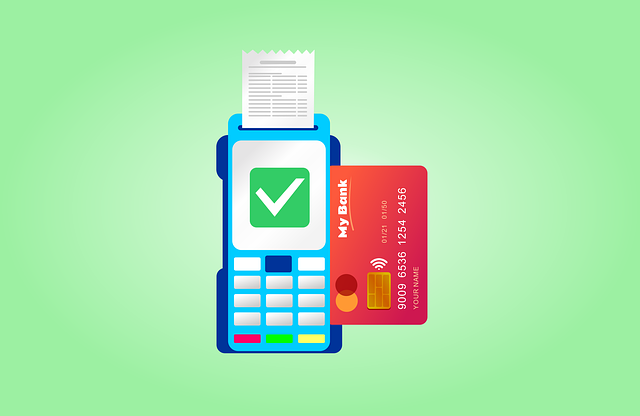TL;DR:
Invoice financing offers businesses a flexible way to improve cash flow by using outstanding invoices as collateral. It provides quick access to capital with competitive rates but comes with higher fees and default risks. Key benefits include bypassing traditional credit checks, faster funding, and no collateral required. Compared to loans, it's non-collateralized, has simpler terms, and is based on sales data.
To access invoice financing, businesses engage specialized providers who evaluate their invoice portfolio. The process involves selling invoices at a discount, with the provider advancing 70%–90% of total value. Repayment occurs when customers pay, minus fees.
Before applying, businesses should consider higher interest rates, fees, and potential impacts on customer relationships. Thorough research of reputable providers, client reviews, and comparing offers is essential for making an informed decision tailored to their unique cash flow needs.
Looking to unlock your business’s cash flow potential? Explore the power of invoice financing – a game-changing strategy that transforms outstanding invoices into immediate capital. This article demystifies invoice financing benefits and how invoice financing works, offering insights into its advantages over traditional loans. Learn about navigating the application process, identifying reliable invoice financing providers, and understanding the pros and cons to make informed decisions. Discover how this innovative approach can revolutionize your business’s financial landscape.
- Understanding Invoice Financing: Unlocking Cash Flow Potential
- Invoice Financing Benefits: A Game-Changer for Businesses
- Invoice Financing vs Traditional Loans: Weighing Your Options
- The Mechanics of Invoice Financing: How Does it Work?
- Pros and Cons of Invoice Financing: Knowing the Trade-Offs
- Navigating the Application Process: Finding Reliable Providers
Understanding Invoice Financing: Unlocking Cash Flow Potential

Invoice financing is a powerful tool that can unlock significant cash flow potential for businesses. Unlike traditional loans, which are often based on a company’s hard assets, invoice financing leverages unpaid invoices as collateral. This alternative financing method provides several benefits, such as providing immediate access to funds, improving cash flow management, and reducing the reliance on personal credit scores. By selling outstanding invoices to invoice financing providers, businesses can receive a substantial upfront payment, effectively accelerating their cash receipts.
When considering invoice financing, it’s crucial to weigh the pros and cons. On the positive side, it offers flexible repayment terms and often has lower interest rates compared to short-term loans. However, there are also potential drawbacks, such as higher fees if the invoicing process isn’t streamlined and the risk of default if clients fail to pay their invoices on time. Applying for invoice financing typically involves demonstrating a robust book of business and a consistent invoicing history. Reputable invoice financing providers specialize in this alternative lending space, making it accessible to various industries, especially those with seasonal or unpredictable cash flows.
Invoice Financing Benefits: A Game-Changer for Businesses

Invoice financing benefits are transforming the way businesses manage their cash flow. Unlike traditional loans that often require collateral and strict repayment terms, invoice financing leverages a company’s outstanding invoices as collateral. This innovative approach offers several advantages for businesses of all sizes. For instance, it provides quick access to working capital, enabling firms to cover immediate expenses or seize market opportunities without delay.
When comparing invoice financing vs. loans, the former stands out due to its flexibility and reduced financial burden. The process is straightforward: business owners sell their invoices (which represent money owed by customers) to finance providers at a discount. This instant cash injection allows companies to focus on core operations while leaving their long-term debt obligations intact. Applying for invoice financing with reputable providers like BlueVine, Fundbox, or FactSet can be a strategic move for businesses looking to optimize their financial health and maintain steady growth.
Invoice Financing vs Traditional Loans: Weighing Your Options

When considering funding options for your business, understanding the distinction between invoice financing and traditional loans is key. While both serve as a means to access working capital, they operate on fundamentally different principles.
Invoice financing, also known as accounts receivable financing, allows businesses to sell their outstanding invoices (or accounts receivable) to a third-party provider at a discount. This offers several invoice financing benefits, such as immediate cash flow and no personal guarantees required. It’s particularly advantageous for businesses with lengthy payment terms or those dealing with large volumes of invoices. In contrast, traditional loans are typically granted based on creditworthiness and collateral, with fixed interest rates and repayment schedules. While they provide a lump sum, the approval process can be stringent, and failure to repay on time may result in penalties. When deciding between these options, businesses should weigh the pros and cons of invoice financing, considering factors like interest rates, fees, and their cash flow needs. Applying for invoice financing often involves engaging with specialized invoice financing providers who evaluate a company’s invoice portfolio, whereas traditional loans are usually obtained from banks or financial institutions that assess overall business health.
The Mechanics of Invoice Financing: How Does it Work?

Invoice financing is a financial solution that allows businesses to convert their outstanding invoices into immediate cash flow. Instead of waiting for customers to settle their accounts, businesses can sell these invoices to specialized providers at a discount. These providers then take on the responsibility of collecting the full amount from the customers, providing a steady stream of funds to support business operations.
The process begins with a business applying to various invoice financing providers who evaluate the company’s financial health and the quality of its invoices. Upon approval, the provider advances a percentage of the total invoice value, typically ranging from 70% to 90%. Once the customer pays the full invoice amount, the financing provider deducts their fee (which is usually a small percentage) and remits the remaining balance to the business. This method offers several benefits over traditional loans, such as shorter application times, no collateral required, and access to larger funds based on existing sales data. However, it also comes with drawbacks, including higher interest rates and fees compared to bank loans, as well as potential impacts on customer relationships if collections become an issue.
Pros and Cons of Invoice Financing: Knowing the Trade-Offs

Invoice financing offers unique benefits that set it apart from traditional loans. One significant advantage is its non-intrusive nature; it doesn’t require businesses to put up collateral, making it an attractive option for those seeking a more flexible funding solution. This method also aligns well with the cash flow management strategy, as it provides working capital by transforming outstanding invoices into immediate funds. Businesses can thus improve their liquidity and cover operational expenses during periods of slow payment collection.
However, there are considerations when exploring invoice financing. The process involves third-party providers who take on the risk of non-payment, which can lead to higher interest rates compared to conventional loans. Additionally, businesses must maintain accurate records and timely invoicing practices to ensure a smooth application process. Applying for invoice financing may also require some time, as it involves verifying invoices and potential credit checks. Despite these cons, understanding the trade-offs allows businesses to make informed decisions and determine if invoice financing providers offer a suitable funding solution for their specific needs.
Navigating the Application Process: Finding Reliable Providers

Navigating the application process is a crucial step in leveraging invoice financing effectively. The first consideration is distinguishing invoice financing from traditional loans. Unlike loans, which are often based on personal creditworthiness or collateral, invoice financing uses outstanding invoices as collateral. This means businesses with strong revenue streams but cash flow issues can access funds without burdening their balance sheet. When applying for invoice financing, it’s essential to understand the pros and cons. On the plus side, it offers flexible repayment terms tied to your customers’ payment schedules, reducing immediate cash outflow pressure. However, interest rates can be higher compared to conventional loans, and there might be fees associated with the service.
Finding reliable invoice financing providers is paramount for a successful application process. Thorough research should be conducted to identify reputable companies that specialize in this area. Look beyond the allure of high advance rates; focus on providers offering transparent terms, competitive interest rates, and responsive customer support. Reading client reviews and seeking recommendations from industry peers can help uncover hidden gems. Additionally, comparing multiple offers allows for a more informed decision based on your business’s unique needs and financial goals.






